Interview with IM G.A. Stany
IM G.A. Stany of Karnataka recently won the Manipal Open Tournament which we had covered extensively. ChessBase India caught up with Stany for a not-too-long but crisp interview that we present to our readers. The interview is replete with some useful chess information, pictures and analysis!
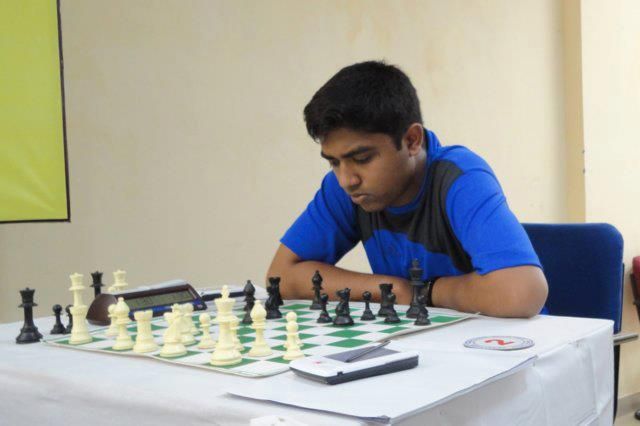
An open tournament has many variations: single rounds and double rounds. How do you cope with the tension?
I think in Open tournaments it is the initial four-five rounds that really matters, against lower rated opponents. Once you get across these rounds successfully, it becomes easier to face equal or higher rated players. It takes one-two days for me to get the proper sleep routine due to change in place and weather but it has got nothing to do with tournament tension.
How do you think chess has changed as a competition between two individuals in the past ten years you have played? Do you think it is tougher these days?
Yes, chess has changed drastically during the last ten years due to engines and the internet. Everybody has access to chess materials and it is easy to prepare. Although chess has become more challenging, it is still fun to play.
On an average, how many hours a day do you work on chess? What about physical training?
It depends on my mood actually, maybe on average around five hours at home. Funnily enough, my working hours in chess drastically increase during my college exam times! For physical training, I am going for Badminton games daily. I’ve recently joined a club at my place and it's having a positive effect so far.
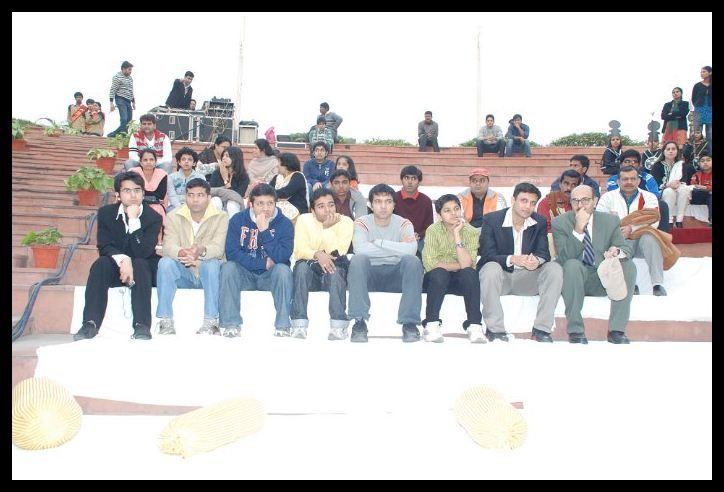
Which is the best game of your career so far? In terms of playing style, whom do you associate yourself with?
[Site "?"]
[Date "2009.05.09"]
[Round "11"]
[White "Stany, G.A.."]
[Black "Saptarishi, Roy Chowdhury"]
[Result "1-0"]
[ECO "B01"]
[WhiteElo "2269"]
[BlackElo "2387"]
[PlyCount "87"]
Rb3 Nbd7 9. Ba3 Qf4 10. Bd3 e6 11. Ne2 Qg4 12. Bc1 Bd6 13. Ng3 Bxg3 14. hxg3 e5
15. dxe5 Nd5 16. Rh4 Qe6 17. Nd4 Qe7 18. Nf5 Qf8 19. Ba3 Nc5 20. Rc4 b6 21.
Bxc5 bxc5 22. Be4 Bxf5 23. Qxd5 Rd8 24. Qxd8+ Kxd8 25. Bxf5 Ke7 26. Rxc5 Qd8
27. Rb7 Re8 28. Rcxc7+ Kf8 29. Rxf7+ Kg8 30. Rxg7+ Kh8 31. Rxh7+ Kg8 32. Be6+
Rxe6 33. Rbg7+ Kf8 34. Rh8+ Kxg7 35. Rxd8 Rxe5+ 36. Kf1 Ra5 37. c4 Rxa2 38. c5
Ra1+ 39. Ke2 Ra2+ 40. Rd2 Ra4 41. Rc2 Re4+ 42. Kd1 Re7 43. c6 Rc7 44. Kc1 1-0
The above one has been one my favorite games so far because I calculated really well and it's a very good example of playing with the “initiative”. About my playing style, I am still trying to figure out whom it resembles. Back in childhood, I was mainly attracted to the games of Capablanca because it was easy to understand his plans. So he influenced my play in younger days.
Here are some more games with notes my Stany for your perusal:
[Site "?"]
[Date "2015.10.21"]
[Round "6"]
[White "Stany, G.A.."]
[Black "Pucher, Sebastien"]
[Result "1-0"]
[ECO "C41"]
[WhiteElo "2385"]
[BlackElo "2326"]
[Annotator "Stany, G.A."]
[SetUp "1"]
[FEN "3r2k1/1b1q1pbp/2p2np1/1p6/8/1P3N2/1BP2PPP/2Q1RBK1 w - - 0 24"]
[PlyCount "71"]
[EventDate "2015.??.??"]
[SourceDate "2007.11.13"]
tournament with 4.5/5. By playing 23....Rd8 my opponent offered draw, after
thinking for a while i realised that his Bishop on b7 is looking bad and if he
tries to activate it with c5 then his pawns become weak so I decided to
continue and my decision paid off} 24. Qg5 h6 25. Qc1 Qd6 26. Be5 Qf8 27. Qa1
Ra8 28. Qb2 (28. Qd4 c5) (28. Qc3 Nd5) 28... Nd7 29. Bd4 $5 {He was under time
pressure now so I was not willing to simplify the position} (29. Bxg7 Qxg7 30.
Qxg7+ (30. Qc1 {is stockfish suggestion}) 30... Kxg7 31. Re7 Rd8 32. Ne5 Nxe5
33. Rxb7 Rd1) 29... Rd8 30. Qc3 Bxd4 31. Qxd4 Nc5 (31... c5 32. Qf4 b4 33. h4)
32. Qh4 $6 (32. Qe3 $1 {was better with the idea Ne5 followed by Ng4}) 32...
Bc8 33. Qf6 {Here both were having time around 3 minutes and making 8 more
moves would complete 40 moves and give us 30 minutes increment, so, we started
playing fast} Rd6 34. Qc3 Ne6 35. Nd2 Qg7 36. Qa5 Qd4 37. Ne4 Rd8 38. Re3 Qd1
39. Re1 (39. Qc3 {was my idea initially but I got scared of 39. Nd4 which
actually was a bad move} Nd4 40. Nf6+ $1 (40. Rd3 Ne2+ $1 41. Kh1 Qxf1#) 40...
Kh8 (40... Kg7 41. Ne8+ Kh7 42. Re1 Qxc2 43. Qa5 $1 {rook trap}) 41. Re1 $1
Qxc2 42. Re8+ Rxe8 43. Qxd4) 39... Qd4 40. c3 Qe5 41. c4 $1 Rd4 42. Ng3 Qb8 43.
cxb5 cxb5 44. Qxb5 Qxb5 45. Bxb5 {Finally, a pawn up but I think with precise
play black should be able to make draw} Bb7 46. Bc4 Nf4 47. f3 Rd2 {is
tempting but my opponent missed my 50.Nc3 move} (47... Bd5 $1 48. Bxd5 Nxd5 49.
Nf1 Rd3 50. Rb1 Rc3 $11) 48. Re8+ Kg7 49. Ne2 Nd3 50. Nc3 $1 {Now it's
difficult for Black because all Whites pieces are active} Nc5 51. Re5 Rc2 52.
Rxc5 Rxc3 53. b4 f5 54. Kf2 Kf6 55. Ke2 Rc2+ 56. Ke3 Rxg2 57. Rc7 f4+ (57...
Ba8 58. Ra7 Bc6 59. Ra6) 58. Kxf4 Ba8 59. Rf7# 1-0
[Site "?"]
[Date "2015.10.29"]
[Round "6"]
[White "Le Roux, Jean Pierre"]
[Black "Stany.g.a"]
[Result "1/2-1/2"]
[ECO "A11"]
[WhiteElo "2575"]
[BlackElo "2385"]
[SetUp "1"]
[FEN "8/5pkp/4p1p1/1N6/2B5/4KPP1/7r/8 b - - 0 33"]
[PlyCount "81"]
[EventDate "2015.??.??"]
[SourceDate "2007.11.13"]
Sautron Open. After the next few moves I was completely winning but missed the
chance and after a long game it ended in a draw.} 33... h5 34. f4 h4 35. gxh4
Rh3+ $1 36. Ke4 Rxh4 37. Nd4 g5 38. Ne2 gxf4 39. Nxf4 {Now its Black to play
and win [%tqu "Find Black's Best move which wins immediately","","",Kf6,"",0,
Kh6,"",10]} Kf6 $6 (39... Kh6 $1 40. Ke5 (40. Ke3 e5 41. Bxf7 Rxf4) (40. Bxe6
Kg5 41. Bxf7 Rxf4+) 40... f6+ {I missed f6} 41. Kxf6 (41. Ke4 e5) 41... Rxf4+)
40. Ke3 e5 (40... Kg5 41. Nxe6+ fxe6 42. Bxe6) 41. Nd5+ Kg5 42. Be2 f5 43. Nc3
Rb4 44. Bd1 Rc4 45. Ne2 Re4+ 46. Kf3 Rh4 47. Bc2 Rh3+ 48. Kf2 Ra3 49. Bb1 e4
50. Nd4 Kf6 51. Bc2 Ke5 52. Nc6+ Kd5 (52... Kd6 53. Nd4 Kd5 $1 {was right} 54.
Nxf5 Rf3+) 53. Ne7+ Ke6 54. Nc6 Rc3 $6 {The bishop escapes now and becomes
more active} 55. Ba4 f4 56. Nd4+ Ke5 57. Ne2 Ra3 58. Bc6 Ra2 59. Ke1 {I think
this position is draw but I am not 100% sure.} Rb2 (59... f3 60. Ng3 e3 (60...
f2+ 61. Kf1 e3 62. Kg2) 61. Bxf3 Kf4 62. Bd5) (59... Ra3 60. Kf2 Rh3 61. Ba8
Rh2+ 62. Ke1) 60. Ba8 f3 61. Nc3 f2+ 62. Kf1 e3 63. Bf3 Kf4 64. Be2 Kg3 65. Nd1
Rb3 66. Bh5 Rb5 (66... Rd3 67. Be2) 67. Be2 Re5 68. Bd3 Re8 69. Ke2 Kf4 70.
Nxf2 exf2+ 71. Kxf2 Ra8 72. Ke2 Ra2+ 73. Kd1 Ke3 1/2-1/2
[Site "?"]
[Date "2015.11.05"]
[Round "9"]
[White "Migot, Tangi"]
[Black "Stany, G.A.."]
[Result "0-1"]
[ECO "E32"]
[WhiteElo "2399"]
[BlackElo "2385"]
[Annotator "Stany, G.A."]
[PlyCount "78"]
[EventDate "2015.??.??"]
[SourceDate "2007.11.13"]
gain few rating points and tie for first place as well.} 1. d4 {My opponent
has generally played 1.e4 and occasionally played 1.d4 so it was understandable
that he was not very well prepared in the opening} Nf6 2. c4 e6 3. Nc3 Bb4 4.
Qc2 O-O 5. e4 $1 {I liked his opening choice because (a) I was surprised, (b)
I had never faced this line so far in a tournament game; therefore, had very
less idea about the theory, and (c) It is a dynamic move and suits our current
tournament situation.} d5 6. e5 Ne4 7. Bd3 c5 8. a3 {During the game 8.a3
looked natural and I was out of theory from here.} ({All I could remember for
White was the line with Nge2 and this was my reference game.} 8. Nge2 cxd4 9.
Nxd4 Nd7 10. Bf4 Ndc5 11. O-O Nxd3 12. Qxd3 Bxc3 13. bxc3 b6 14. cxd5 Qxd5 15.
Rfd1 Rd8 16. c4 Qb7 17. Qc2 Bd7 18. f3 Nc5 19. Nb5 Bxb5 20. cxb5 a6 21. bxa6
Qxa6 22. Rd6 Rdc8 23. Be3 Nb7 24. Rc6 Nc5 25. Rd6 Nb7 26. Rc6 Nc5 {1/2-1/2 (26)
Inarkiev,E (2676)-Gashimov,V (2730) Poikovsky 2009}) 8... Bxc3+ 9. bxc3 Qa5 (
9... cxd4 {Generelly top players have gone with cd4 first, then Qa5 followed
by f6 later.} 10. cxd4 Qa5+ 11. Kf1 Nc6 12. Ne2 f6 13. Bxe4 dxe4 14. exf6 Rxf6
15. Be3 b6 16. h4 Bb7 17. Rh3 Ne7 18. Kg1 Rc8 19. Bg5 Rf7 20. Rc3 Nf5 21. Rb1
h6 22. Rb5 Qa6 23. Rb4 Bc6 24. d5 exd5 25. cxd5 Bd7 26. Rxc8+ Qxc8 27. Qxc8+ {
1/2-1/2 (27) Bartel,M (2658)-Tomashevsky,E (2740) Moscow 2012}) 10. Ne2 cxd4
11. Bxe4 $6 ({I was expecting} 11. cxd5 exd5 12. f3 Nxc3 13. Nxd4 Ne4+ 14. Ke2
f5 $13) 11... dxe4 12. Qxe4 Nd7 $1 (12... Nc6 13. Bf4 dxc3 14. O-O {and white
is doing fine}) 13. O-O (13. Bf4 {Doesn't work now due to} Nc5 14. Qxd4 Nb3)
13... Qxe5 14. Qf3 (14. Qxe5 Nxe5 15. cxd4 Nxc4 {is clear lost for White})
14... dxc3 15. Bf4 $1 {The only way for White to survive is by hindering
Blacks development and also by putting pressure with continuous threats} Qf5 {
I thought my Queen would be safest on g6 square} (15... Qa5 16. Bd6 Re8 17. Bb4
Qc7 18. Nxc3) (15... Qf6 16. Nxc3 Nb6 17. Ne4 Qg6 18. Nd6) 16. Ng3 (16. Nxc3
Nb6 17. Nb5 e5 18. Bg3 Qxf3 19. gxf3 Nxc4) 16... Qg6 17. Bd6 Re8 {and no more
threats!} 18. Ne4 $6 {Ne4 is tempting but it is misplaced here, Now it helps
Black to gain control over a8-h1 diagonal as happened in the game} (18. Rfc1 c2
19. Ra2 e5 20. c5 {was the best way to fight although Black is still better
after e4 followed by Nf6} e4) 18... Nb6 19. Rfe1 (19. c5 Nc4 {was my idea} 20.
Nxc3 (20. Rfc1 Bd7 21. Rxc3 Nxd6 22. Nxd6 Bc6 $17) 20... Nd2) 19... Nxc4 20.
Qxc3 b5 $1 {My opponent missed this move} 21. Bg3 (21. a4 Bb7 $19) 21... Bb7 {
Now I am two pawns up and clearly winning} 22. Nc5 Bd5 23. Na6 Rac8 {Thanks to
my well placed Queen on g6 White can never play Nc7} 24. Qb4 (24. Qd4 Ba8 25.
Qxa7 e5 $19) 24... h5 25. f3 (25. h4 f5 26. Qb1 Nd2 27. Qb4 Ne4) 25... Bxf3 26.
Ra2 (26. gxf3 h4 27. Kg2 hxg3 28. hxg3 Ne3+ $1 {I thought my opponent would
fall into this but he escaped} 29. Rxe3 Rc2+ 30. Kh1 (30. Kh3 Qh6+ 31. Qh4 Qxe3
) 30... Qxg3) 26... Bd5 27. Rf2 e5 28. Qxb5 Qc6 {Forcing the exchange. Once
the queens are off the board it was easy to convert the material into a win.} 29. a4
Qxb5 30. axb5 f6 31. Rc2 Na3 32. Rb2 Bc4 33. Nb4 Nxb5 34. Ra1 Nd4 35. Rxa7 Ne2+
36. Kf2 Nxg3 37. Kxg3 Rb8 38. Rd2 Rxb4 39. Rdd7 Kh8 0-1
What is your thinking process like during a game? For example, the opponent makes a move and then, is there any routine you follow? Or is it all an intuitive dance, and boom! A move.
It's hard to pinpoint something because it differs from one situation to another. I would say it's the mixture of calculation and intuition. Pattern recognition also plays a huge role in the thinking process.
How do you react to losses in tournaments?
Generally, after a loss, I try to hang out with my chess friends or watch comedy movies to divert my attention from chess for the time being.
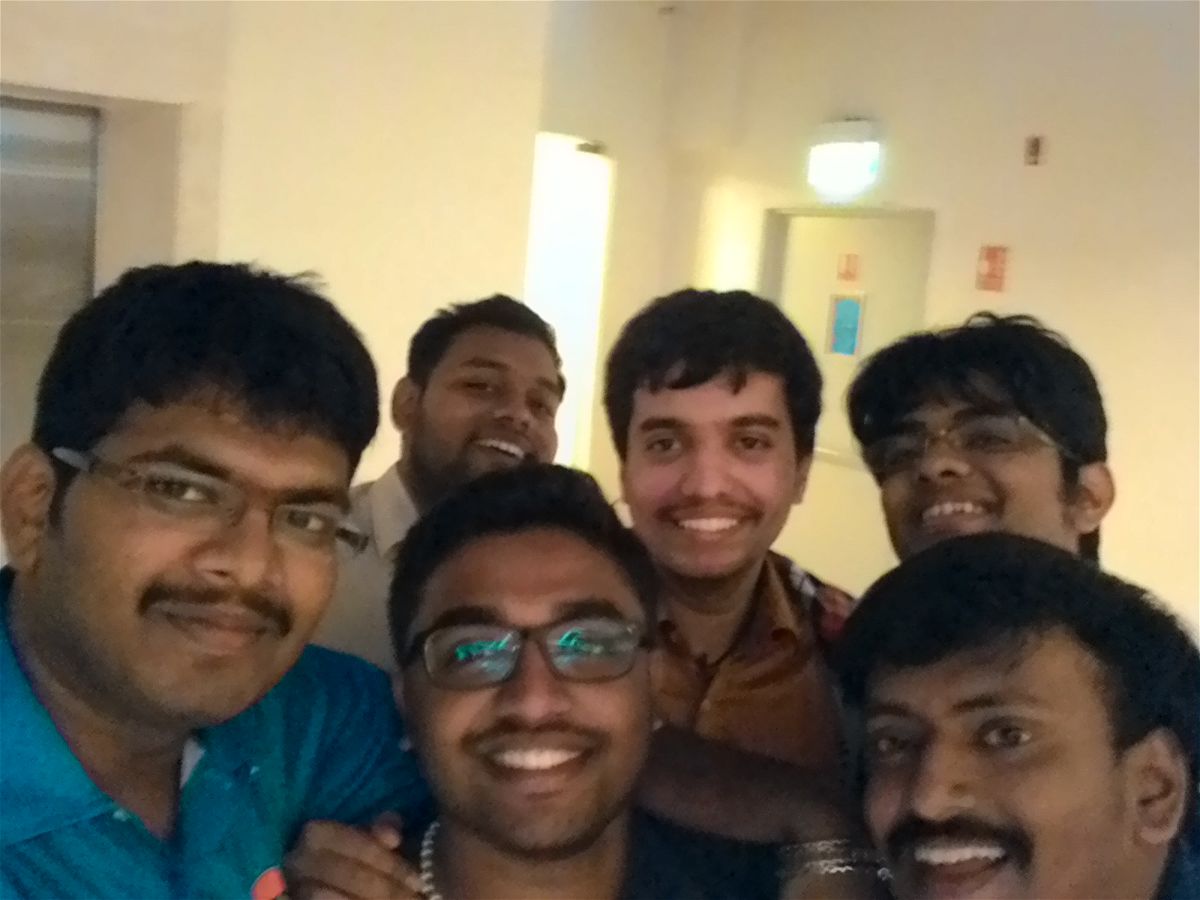 Stany surrounded by (clockwise) GM Lalith Babu, GM Deepan Chakkravarthy, GM Shyamsundar, IM Srinath Narayanan and Saravana Krishna
Stany surrounded by (clockwise) GM Lalith Babu, GM Deepan Chakkravarthy, GM Shyamsundar, IM Srinath Narayanan and Saravana KrishnaMany a trainer have promulgated that improvement comes from analyzing your losses. How do you work on your games, with respect to self-analysis? Do you have a 'method' to deal with it?
Analyzing our own game is highly recommended by all the strong players but it is definitely not an easy task -- I am still trying to learn the art of self-analysis myself, so I cannot answer much about it. What I have been doing so far was to show my games to my trainers and friends and get their views on it, which I think is also an effective way to improve.
What is your opinion about psychology in chess? During a game for example, do you sense a shift or anything of that sort, which helps you decide on your moves?
Psychology has a great a role in the game. I think at the higher level it plays a key role in terms of preparation. At our level, the significance of psychology is considerably lesser because many of the opponents would be unknown people to me. Most of the decisions over the board are taken from the practical point of view than the psychological point.
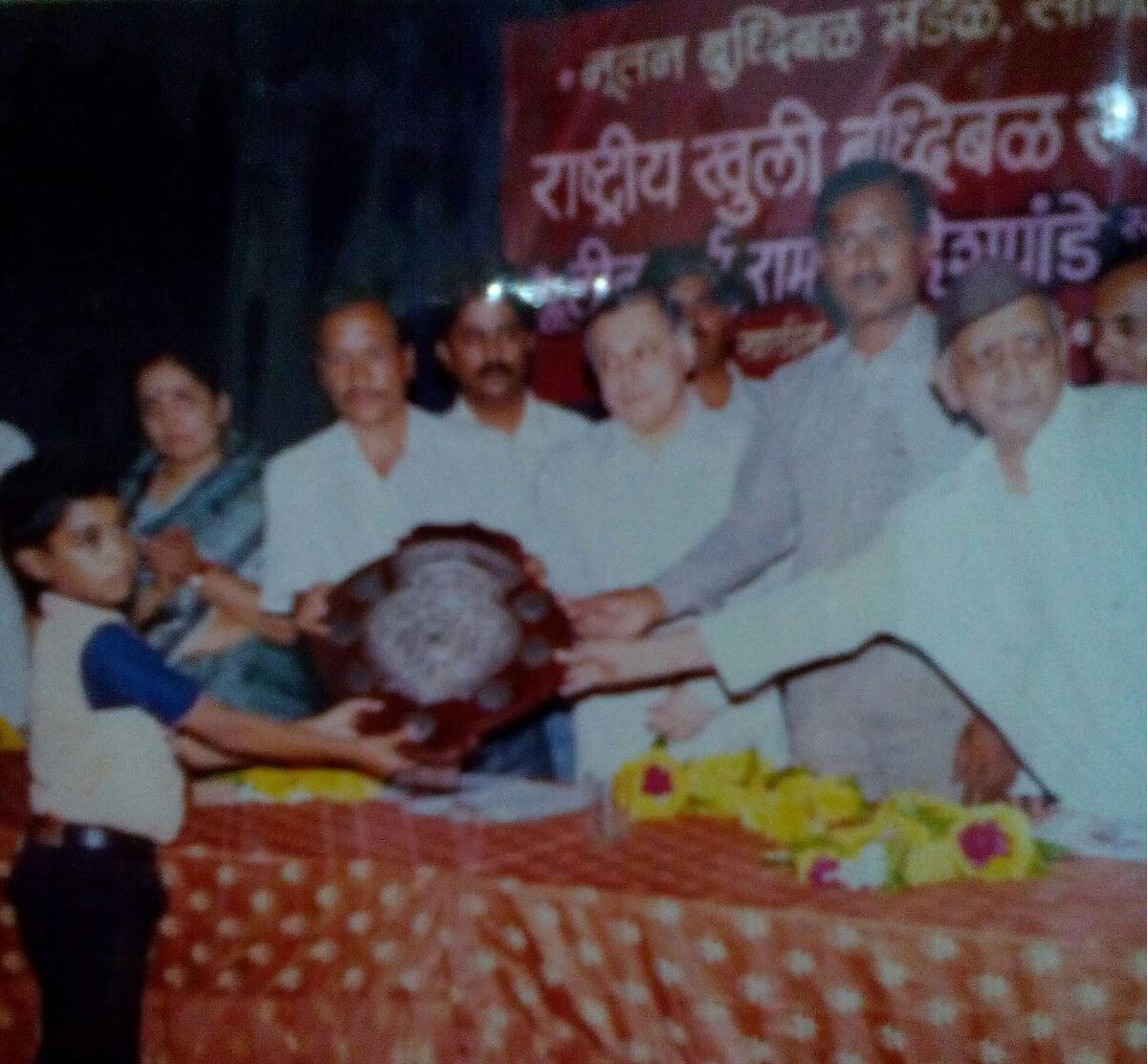
How did you enter chess? Do you remember how it happened?
Yes, I do remember. During some holidays, my uncle, in order to pass some time, started to teach chess to my elder brother Tony, and I was sitting next to them watching them play daily -- that's how I learnt the basics of the game. In the next couple of years, I regularly played chess with my relatives and used to beat them easily. Seeing my interest in the game, my mother decided to take me to a chess trainer in my city Mr. Srikrishna Udupa. It all began from there.
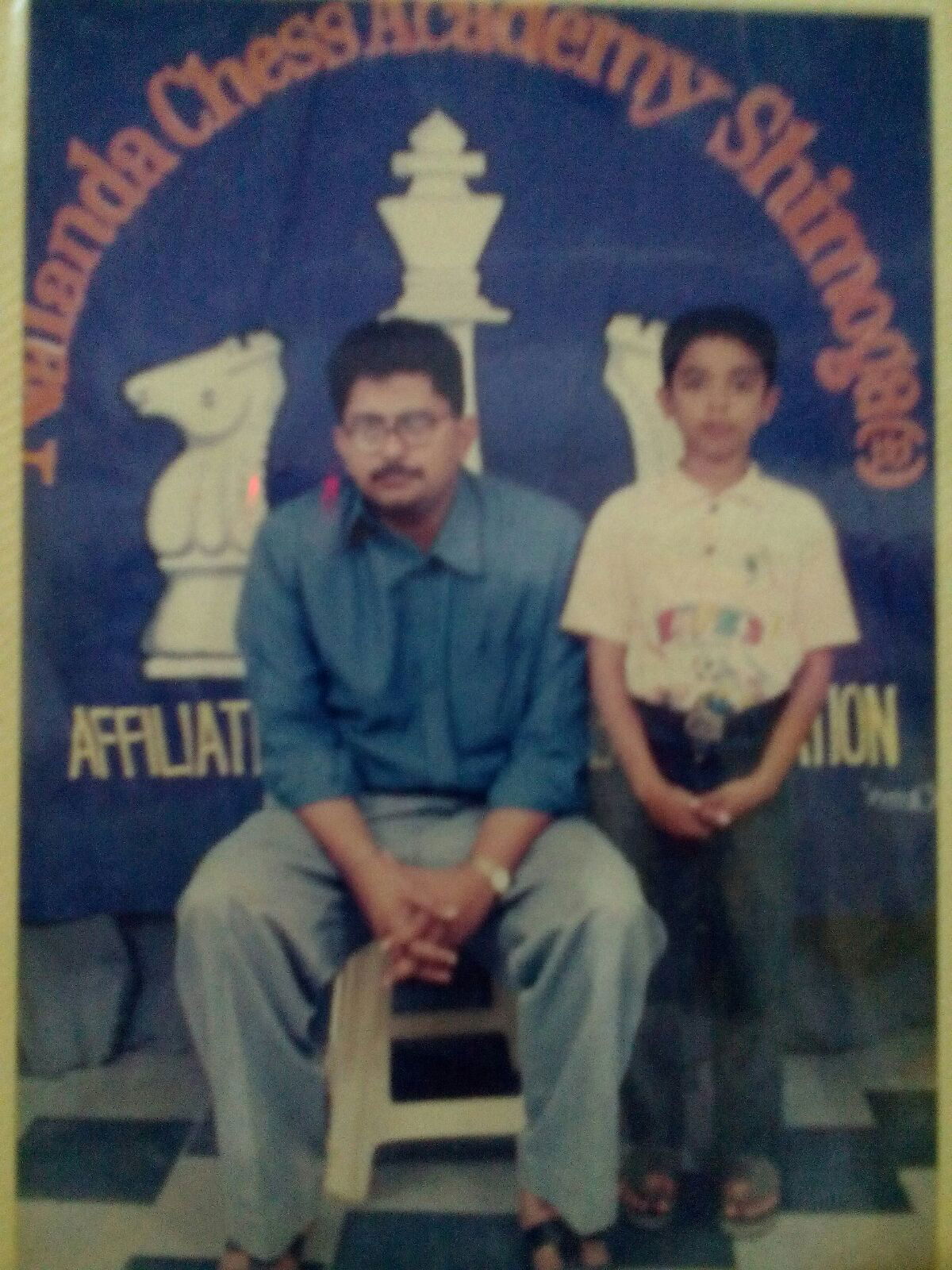
You were a student of Srikrishna Udupa. Kindly describe his role in your chess career.
Mr. Srikrishna Udupa was my first chess coach and is still my mentor. He has his own academy known as Nalanda Chess Academy in my hometown Shimoga. It is very popular in Shimoga and among the chess circles in Karnataka. Mr. Udupa cannot see like normal people can due to his visual impairment; that said, he has great passion towards teaching chess and has taught it to more than a thousand students like me in Shimoga, charging a very nominal fee -- I think it was around Rs. 3000 rupees a year per student!
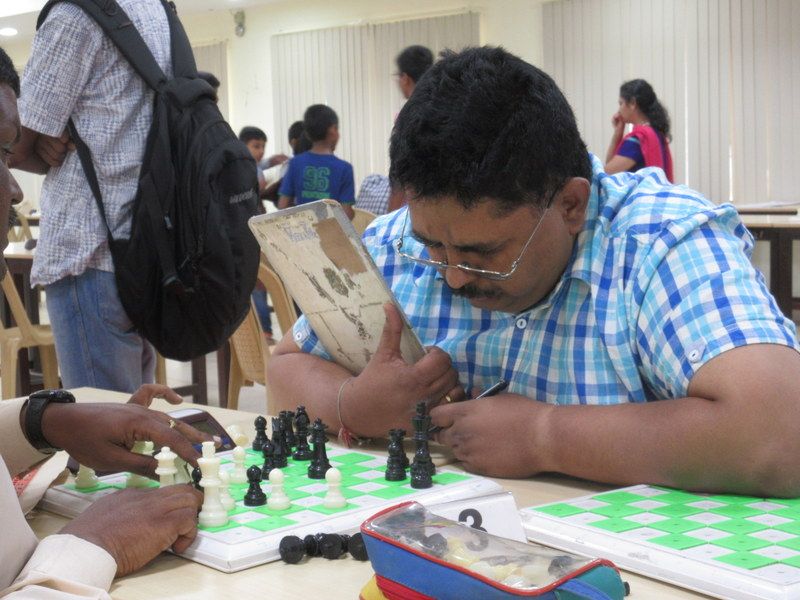
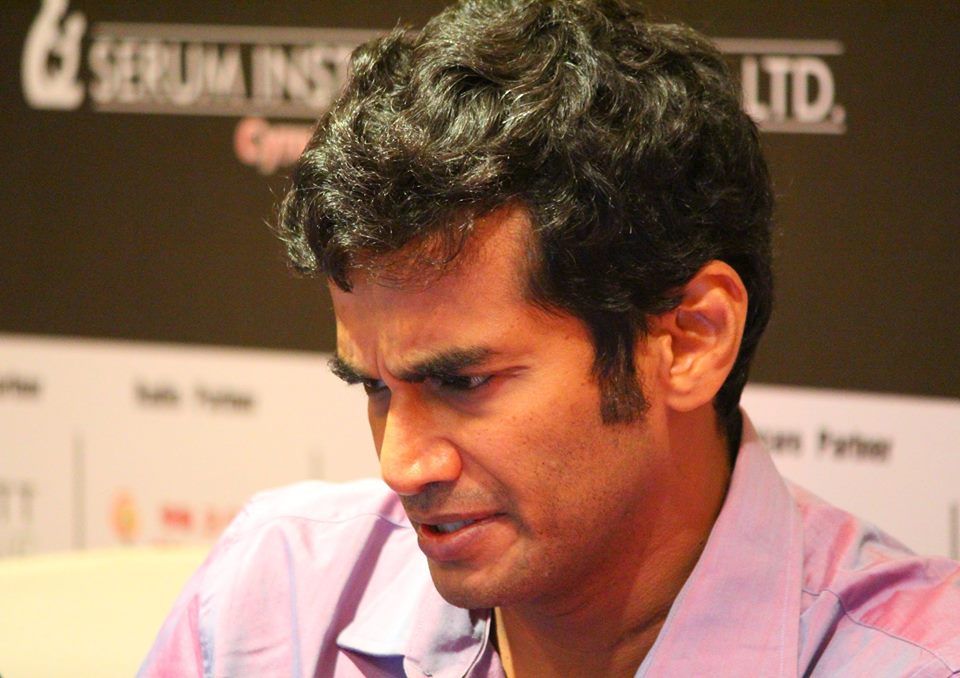
Do you work with a coach/player now?
Currently, I am being trained by IM V. Saravanan.
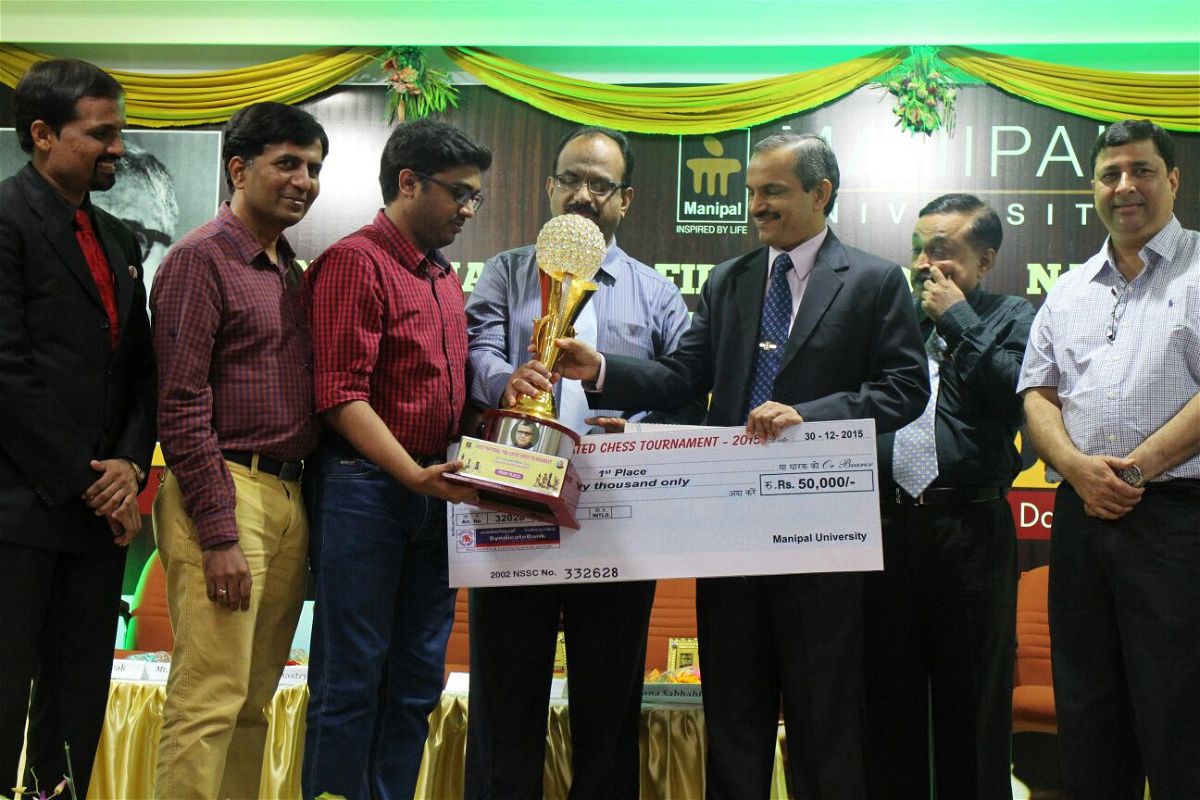
What is your goal as regards to chess? How do you intend to go ahead with your career in the coming years?
I am very confident that by the end of this year I will cross the 2500 barrier because I have been working hard from the last six months and the results have been good so far.
There was a period in 2014-2015 when you went through quite a slump. In fact, after the Jalgaon National A, things haven’t been too rosy for you. What has been going wrong in this period?
During 2014-15, I lacked the motivation to work and was more focused towards education but it has changed now and things will surely improve.
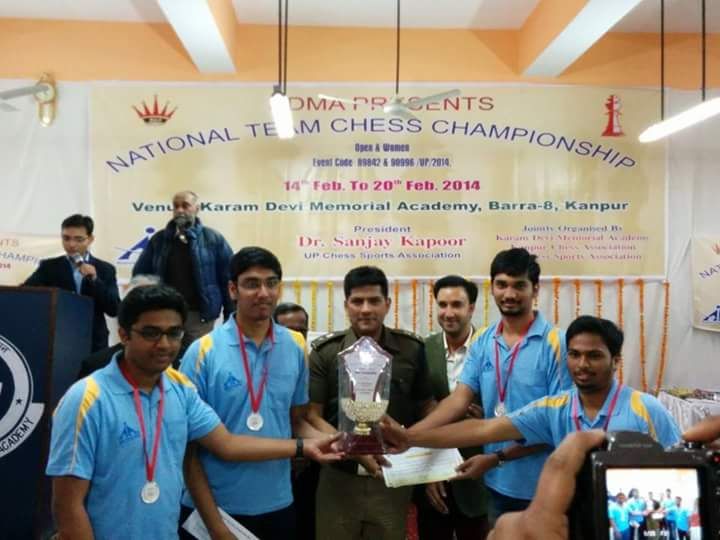
That must feel good -- you are steadily climbing back. What are your tournaments for 2016?
Yes, getting back to form and increasing rating always makes you feel happy and gives a lot of motivation to work harder. My next tournament would be the IIFL Wealth Mumbai International Open and then National Teams for Airport Authority of India. In April, I am planning to play two tournaments abroad -- exciting times ahead!
ChessBase India thanks IM G.A. Stany and wishes him bon voyage for his future endeavours!

